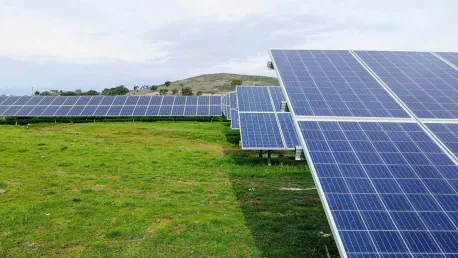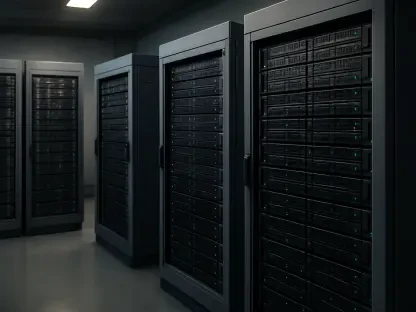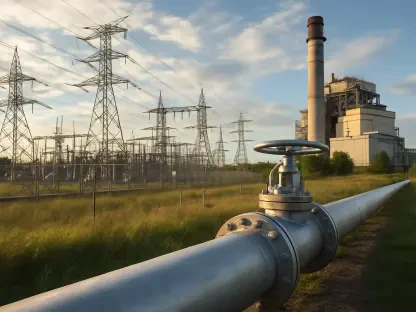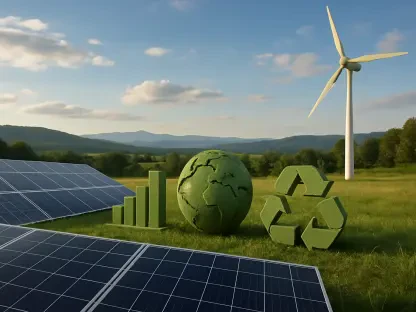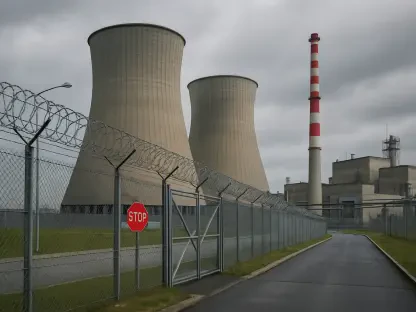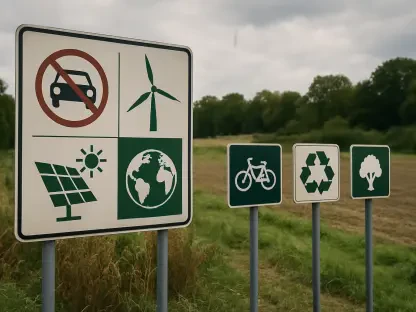South Carolina is on the cusp of a solar energy revolution. With its sunny skies and vast open lands, the state is primed for solar energy generation. However, it currently lags behind its neighbors in installed solar capacity. This article delves into the potential for solar energy in South Carolina, the challenges it faces, and the steps being taken to harness this renewable resource.
The Promise of Solar Energy in South Carolina
Ideal Conditions for Solar Power
South Carolina boasts favorable conditions for solar energy, including abundant sunshine and extensive open land. These factors make it an ideal location for solar power generation. Despite these advantages, the state ranks 19th nationwide in installed solar capacity, trailing behind North Carolina, Georgia, and Virginia. The ranking underlines the untapped potential for solar energy production in South Carolina and the state’s drive to catch up with its more advanced neighbors.
The disparity in ranking highlights a need for accelerated investment in solar infrastructure. Sunny conditions alone can’t propel the state to the forefront of renewable energy; significant systemic shifts and investments are essential. There is growing optimism among energy experts that South Carolina could rival its neighbors by tapping into its abundant natural resources effectively. Yet, this requires a concerted push from both the government and private sectors.
Rising Energy Demand
The state is anticipating a massive increase in energy demand over the next decade, driven by the influx of energy-intensive data centers. Utilities are increasingly turning to solar energy as a viable, rapidly deployable, and cost-effective solution to meet this growing demand. The rapid deployment attribute of solar energy presents an immediate advantage, capable of addressing shorter-term spikes in consumption more flexibly than traditional energy sources.
Silicon Ranch’s co-founder and CEO, Reagan Farr, describes solar energy as the “nearest term, lowest cost solution to get new electrons into the grid.” This viewpoint encapsulates the urgent need to bridge the gap between energy demand and supply without imposing additional financial burdens on consumers. South Carolina’s unique position propels it towards an imminent need for embracing renewable energy sources to secure a cost-efficient energy future that meets the evolving demands of its industries and residents.
Silicon Ranch’s Ambitious Solar Project
Project Overview
Silicon Ranch, a renowned solar developer, is spearheading the largest utility-scale solar project in South Carolina. Set to become operational by the end of 2025, this project aims to add 200 megawatts of solar power to the grid, with an additional 50 megawatts the following year. This initiative signifies a critical move towards realizing South Carolina’s solar energy potential while aligning with the growing demand for sustainable power.
The project is contracted with Santee Cooper and the Central Electric Power Cooperative, aiming to integrate the new solar power into their electric grids. The involvement of these utilities marks a significant advancement in South Carolina’s renewable energy landscape. Silicon Ranch’s commitment underscores the burgeoning interest in larger-scale solar deployments, setting a precedent for future endeavors that blend economic pragmatism with environmental stewardship.
Environmental Stewardship
The project spans 3,200 acres of previously timberland used for growing and harvesting pine trees. Silicon Ranch plans to utilize portions of this land for wildlife habitat and regenerative land management, demonstrating a commitment to environmental stewardship. In doing so, the company is taking a holistic approach that integrates sustainable energy production with broader ecological benefits, ensuring that land use serves multifaceted purposes beyond mere energy extraction.
Approximately 90 percent of the solar panels for the project will be sourced domestically from First Solar’s manufacturing facility in Perrysburg, Ohio. This aligns with Silicon Ranch’s focus on supporting local economies and mitigating the environmental impact associated with international shipping logistics. Utilizing American-made solar panels also underscores a commitment to high-quality manufacturing standards and resilience against potential supply chain disruptions.
Challenges in Solar Energy Adoption
Lengthy Approval Processes
The approval process for the first 200 megawatts of the project was protracted and labor-intensive, spanning several years. However, the success of this project is expected to pave the way for more streamlined future solar developments in the state. Legislative and procedural refinements can be anticipated to smooth out the bumps experienced during this initial phase, fostering an easier pathway for subsequent projects.
The time-consuming approval stages reflect broader regulatory challenges that solar developers often face. The intricacies involved in land assessments, environmental impact evaluations, and community engagement are critical yet can cause delays. Nevertheless, overcoming these hurdles showcases the robustness of South Carolina’s capacity to integrate and mainstream renewable energy projects, progressively simplifying the journey for future initiatives.
Legislative Hurdles
A concerning legislative development is House Bill 3309, which threatens to complicate the path for renewable energy projects while facilitating coal and natural gas development. This bill would authorize the construction of a large gas plant and impose more stringent requirements for renewable projects. For instance, even smaller solar projects of 20 megawatts and above would have to undergo a siting review process, which previously applied only to larger projects of 75 megawatts or more.
The bill also aims to shorten contract durations between solar developers and utilities, thus increasing financial risks for these developers. Critics argue that this would hamper the long-term viability and appeal of solar investments. The juxtaposition of aid for fossil fuels with burdens for renewables symbolizes an ongoing struggle between the old and new paradigms within South Carolina’s energy policy framework. Overcoming such legislative obstacles remains crucial for a seamless transition towards a more sustainable energy future.
The Role of Utilities in Solar Energy
Santee Cooper and Central Electric Power Cooperative
Silicon Ranch contracted the current project with Santee Cooper and the Central Electric Power Cooperative in 2020. These utilities will integrate the new solar power into their electric grids, marking a significant step forward in the state’s renewable energy landscape. The engagement of these key players points to a growing recognition of solar energy’s potential within institutional frameworks.
Their partnership underscores the necessity of collaboration between private developers and public utilities to meet the state’s expanding energy needs. By embedding solar power into their grids, Santee Cooper and the Central Electric Power Cooperative are not only boosting South Carolina’s renewable portfolio but also providing a model for how utility companies can champion the shift towards cleaner energy. It is a testament to the evolving mindset that recognizes the long-term advantages of renewable integration.
Balancing Fossil Fuels and Renewables
Despite the burgeoning interest in renewables, major utilities are reconsidering their earlier commitments to retire coal plants. For instance, Santee Cooper had planned to close its Winyah coal plant by 2028 but now intends to keep it operational into the early 2030s. This reveals the complexities of transitioning entire energy systems, where reliability and economic considerations often temper the pace of renewable adoption.
Balancing fossil fuels and renewables creates a transitional phase wherein both sets of energy sources coexist to ensure a stable supply. Such dynamics reveal the intricate dance utilities must perform to maintain grid reliability while ushering in cleaner energy sources. This balancing act underscores the gradual nature of energy transitions, which necessitate careful planning and adaptive strategies to harmonize immediate energy requirements with long-term sustainable goals.
The Future of Solar Energy in South Carolina
Community Collaboration
Strong community collaboration has been instrumental in the approval of subsequent solar projects. The third project received approval within six months, showcasing the potential for more efficient future developments. This swift approval signifies the importance of community buy-in and effective communication between all stakeholders, fostering a supportive environment for renewable projects.
The absence of community resistance can expedite project timelines significantly, minimizing bureaucratic delays. As evidenced by Silicon Ranch’s experience, establishing a collaborative nexus between local communities, regulatory bodies, and developers can smooth out the intricacies involved in large-scale energy projects. This collaborative spirit heralds a promising future for additional solar developments, provided such constructive engagements become the norm.
Commitment to Solar Development
Despite the challenges, Silicon Ranch remains committed to continued solar development in South Carolina. The company recognizes solar as an increasingly vital component of the energy mix to meet growing demands, particularly in the Southeast. Their steadfast commitment is vital for sustaining momentum in the state’s renewable energy sector, emphasizing the importance of tenacity and strategic planning.
Silicon Ranch’s forward-looking approach includes environmental stewardship, innovation, and financial prudence, which collectively enhance the appeal and feasibility of solar projects. Their efforts exemplify the potential for transformative change within South Carolina’s energy landscape. As Silicon Ranch continues to push the envelope, it will serve as a standard-bearer for other developers and stakeholders keen on advancing South Carolina’s solar energy aspirations.
Conclusion
South Carolina is on the verge of experiencing a significant shift toward solar energy. Blessed with plenty of sunny days and expansive open spaces, the state has great potential for generating solar power. Despite these advantages, South Carolina currently trails behind neighboring states in terms of installed solar capacity. This situation presents a unique opportunity to explore what makes South Carolina an ideal candidate for solar energy, the obstacles it needs to overcome, and the initiatives currently in place to capitalize on this renewable energy source. The state’s ample sunshine and available land place it in an excellent position to leverage solar technology effectively. However, various challenges have slowed progress, including regulatory hurdles, investment funding, and public awareness. In response, both state and local governments, along with private sector partners, are working on developing robust strategies to enhance South Carolina’s solar capacity. By understanding and addressing these challenges, South Carolina is poised to become a leader in solar energy in the near future.
